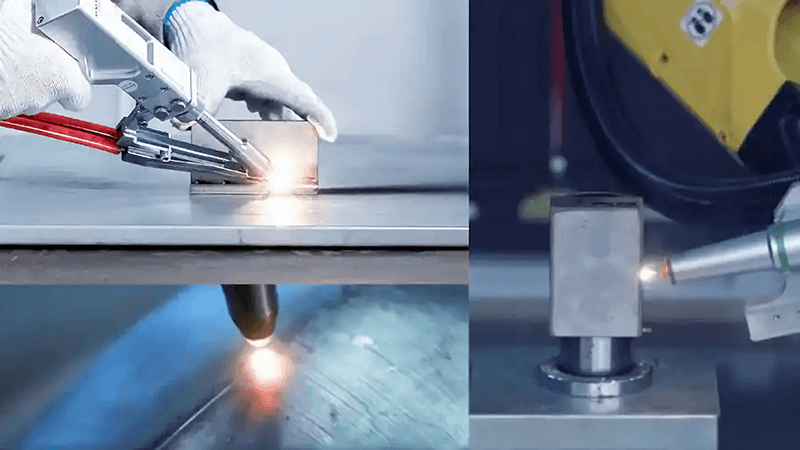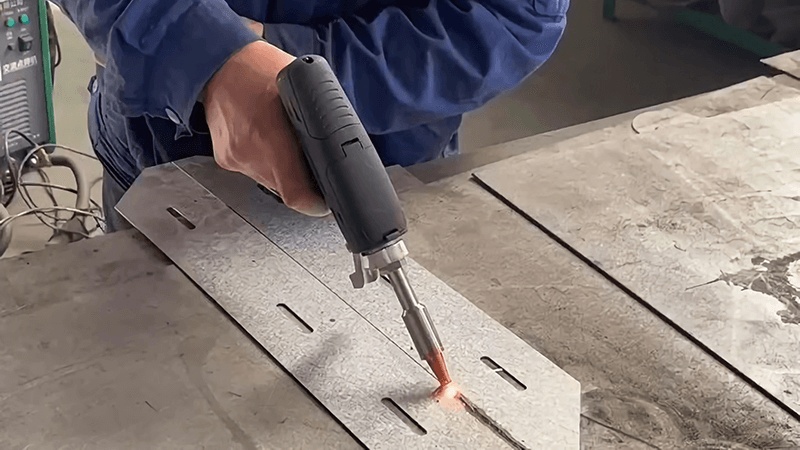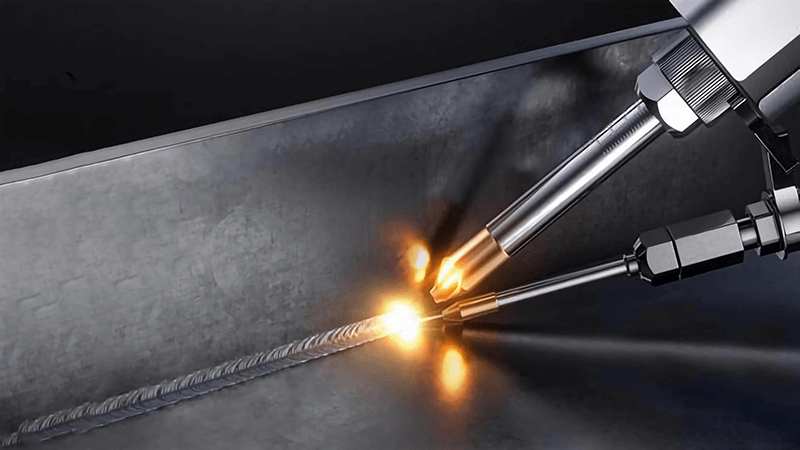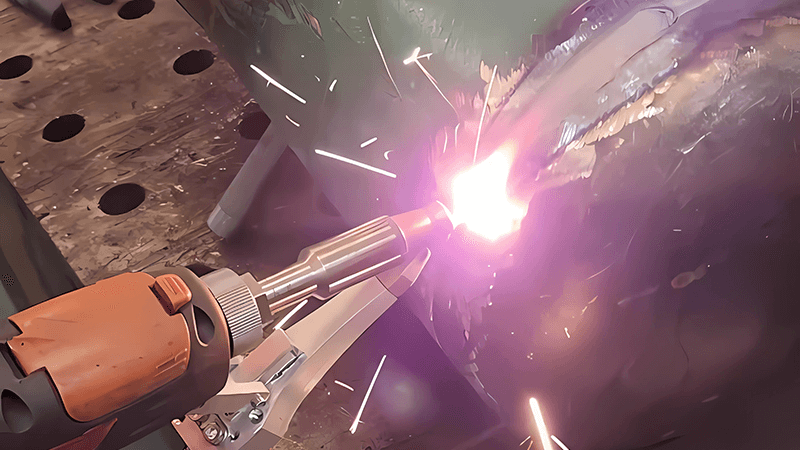I often see people stuck. They want to weld at home, but their outlet is only 120V. They fear big tools, high heat, and ugly distortion. I understand that pain. I build simple, precise answers. I make home welding easy.
The best machine for home use on 120V is a compact handheld fiber laser welder. It runs on standard power with the right inverter, gives low heat input, and delivers clean, precise welds with little distortion and post-processing.
Many people think 120V means weak tools and poor results. It does not. I design systems that balance power electronics, optics, and beam delivery. I focus on safety, stability, and ease of use. So you can weld at home with confidence.

Can you run a welder on 120V?
Many home users worry that 120V is not enough. They think they need 240V or three-phase. That fear is common. The real problem is not voltage alone. The problem is total power, duty cycle, and heat control. I solve this with smart power and an efficient beam.
You can run a welder on 120V if the system is designed for it. A handheld fiber laser welder draws modest current, converts it with a high-efficiency power module, and focuses energy into a tiny spot. This turns limited wall power into useful weld energy with low heat spread and very high precision.
Dive deeper
I build machines at Kirin Laser that work well on standard home power. I do this by matching three things: power conversion, optical efficiency, and process control. I avoid waste. I keep energy where the joint needs it.
Why 120V can work
A 120V circuit1 has limits. The current is often 15A or 20A. The total power is around 1.2–2.0 kW at the wall. Many old welding methods waste a lot of that power as heat in the arc and in the workpiece. A fiber laser2 is different. It has high electrical-to-optical efficiency. It focuses a small, high-brightness beam into a tiny spot. The beam couples well into metals because the wavelength and intensity help absorption. So even with modest wall power, a fiber laser can produce strong, narrow welds.
The role of beam quality
Beam quality is the heart of this. Good beam quality3 means I can keep the spot small and the energy density high. I can move slower or faster to tune the heat input. I can keep the heat-affected zone small. This is how I protect thin parts and delicate items at home.
Power electronics and safety
I pair the laser with a power supply that fits a 120V line and respects breaker limits. I add soft-start logic, power factor correction, and stable current control. I add interlocks, an e-stop, and key switches. I make sure the unit stays safe on a home circuit. I also guide the user on the right circuit and the right extension cord length.
Practical use cases at 120V
- Thin stainless steel kitchen parts
- Small brackets and sheet metal repairs
- Thin carbon steel patches
- Jewelry and fine craft work
- Small aluminum parts with proper prep and wire
A quick comparison
| Aspect | 120V Fiber Laser | 120V MIG/Stick |
|---|---|---|
| Heat input | Low, focused | Higher, wide |
| Distortion | Minimal | More likely |
| Precision | Very high | Moderate |
| Post-processing | Little | Often more |
| Learning curve | Short with guidance | Moderate |
| Home circuit fit | Good with limits | Often trips breakers |
I respect code and safety. I tell users to run on a dedicated 20A circuit when possible. I also provide clear PPE and enclosure advice. When you follow simple rules, 120V is enough, and it is safe.

What welder can I plug in at home?
People want to plug in and start fast. They want a small footprint. They want clean welds. They do not want smoke, spatter, or slag. I understand this. I design handheld fiber laser welders that fit this need.
A compact handheld fiber laser welder suits a home outlet when sized right. It is light, simple, and clean. It needs eye-safe practice and a basic enclosure. It makes strong welds on thin metals. It has low noise, low fumes, and low post-work cleanup in a home shop.
Dive deeper
I build systems for home users who care about quality and time. I keep the setup simple and the results consistent. I also support private-label and OEM partners who sell into home and light shop markets.
What I include in a home-ready kit
- A compact laser source4 with 120V input option
- A handheld scan head with wobble control for wider seams
- Interlock-ready ports for a small enclosure or curtain
- A basic fume extractor port5
- A wire feed option for gap filling
- A starter set of nozzles and safety glasses rated for the wavelength
Why this plugs in well
The power module is efficient, so the machine draws less wall power for a given weld. The beam puts energy into the joint, not the air. The weld is narrow. There is little rework. This reduces the total time and total cost for a home user.
Home space and safety
I do not want you to weld in an unsafe area. I want a simple enclosure or a dedicated corner. I want reflective surfaces covered. I want a fume path and clean airflow. I also want your eyes protected and pets and kids out of the area.
Real story from my client
A client in the U.S. wanted to repair fine metal jewelry at home. They tried torch and micro-TIG, but the heat changed the look of the piece. They switched to a 120V handheld fiber laser welder6 from me. They made clean, small welds. The design stayed sharp. The finish stayed bright. They worked in a small room with a basic curtain and extractor. The setup fit their home. The results pleased them and their customers.
A quick options table
| Need | Good Choice | Why |
|---|---|---|
| Thin stainless | Handheld fiber laser | Low heat, clean seam |
| Small aluminum | Fiber laser + wire | Better gap bridge |
| Jewelry | Low power fiber laser | Fine control, tiny spot |
| Light brackets | Fiber laser | Fast, little cleanup |
| Painted parts | Add laser cleaning head | Strip then weld cleanly |
I do not push a heavy machine for home use. I pick a compact unit that you can move, store, and plug in with less hassle. I design the kit so you can start on day one.

How thick can you weld with 120V?
People ask me about thickness first. They want to know limits. This is smart. I always match power and thickness. I also match speed and joint design. At 120V, I focus on thin stock and fine work. This is where fiber lasers shine.
On 120V, a compact fiber laser welder does best on thin metals. Expect strong results on thin sheet, small brackets, and fine parts. With wire and good fit-up, you can push a bit more. For heavy plate, I suggest higher input power or a different setup.
Dive deeper
I choose numbers with care, because jobs vary. Material reflectivity7, finish, and joint prep all matter. The figures below match real shop use with good prep and a stable hand.
Typical ranges with a compact unit
- Stainless steel: great up to about 1.5 mm in a single pass; up to 2.0 mm with slower speed or wire
- Mild steel: great up to about 1.5–2.0 mm; more with multi-pass at reduced speed
- Aluminum: good up to about 1.0–1.5 mm with wire, because of reflectivity and thermal conductivity
- Copper and brass: possible on thin work with care; I lower power, tune wobble, and improve surface absorption
These ranges assume a well-tuned beam, correct focus, and a clean joint. I also assume a 20A circuit to avoid nuisance trips. If your circuit is 15A, I still get good results on very thin material, but I reduce duty cycle8 and speed.
Why thickness has limits
A beam can concentrate energy only so much before wall power becomes the limit. Thick sections pull heat away fast. They also need deeper penetration. That takes more energy. On a 120V line, I choose quality over brute force. I make the best thin welds possible. For thick work, I propose a higher power unit on 240V9 or a shop environment.
How I stretch limits safely
- I use wire feed to bridge gaps and add filler
- I pre-clean with a laser cleaning head10 or solvent wipe to improve coupling
- I use a darker surface prep or paste for reflective metals when needed
- I slow travel speed and add a slight wobble for better seam width
- I keep focus tight and stable with a clear nozzle and proper standoff
Quick guide by material and pass plan
| Material | Single-Pass Target | With Wire/Multi-Pass | Notes |
|---|---|---|---|
| Stainless | ~1.5 mm | ~2.0 mm | Clean, strong seams |
| Mild steel | ~1.5–2.0 mm | ~2.5 mm | Good with fit-up |
| Aluminum | ~1.0–1.5 mm | ~2.0 mm with care | Needs prep, wire |
| Copper | ~0.5–1.0 mm | ~1.5 mm with care | Manage reflectivity |
I set honest expectations. I want you to win on thin work at home. If your parts are thicker, I guide you to the right power path.

What type of welding is best for home use?
People want low mess and fast learning. They also want strong, neat welds. Traditional methods can work, but they bring spatter, fumes, and more cleanup. I face these trade-offs with care. For a home, I like fiber laser welding.
For home use, a handheld fiber laser welder offers the best mix of precision, low heat, and simple cleanup. It fits small spaces. It keeps distortion low. It reduces rework. It works well on thin metal, which is common in home projects.
Dive deeper
I compare methods often for buyers who run small shops, garages, or home labs. I judge by power needs, safety needs11, speed, finish, and cost to run.
Methods comparison
| Method | Home Power Fit | Heat/Distortion | Cleanliness | Learning Curve | Best Use |
|---|---|---|---|---|---|
| Fiber laser | Good on 120V | Very low | Very clean | Short | Thin metal, precise work |
| MIG | OK on 120V | Medium | Some spatter | Short | General fab |
| TIG | Often 240V better | Low to medium | Clean | Longer | Thin metal, aesthetics |
| Stick | 120V marginal | High | Slag | Short | Heavy outdoor work |
Why I choose fiber laser
- The beam is precise. I make small, strong seams.
- The heat is low. I keep parts straight and flat.
- The finish is clean. I grind less and polish less.
- The machine is compact. I store it after use.
- The setup is fast. I switch between metals and seams with presets.
Safety and control
Laser welding needs eye safety and a managed space. I include eyewear and interlocks. I suggest a simple enclosure or curtain. I teach safe habits. With these steps, laser welding is clean and calm in a home space.
How software helps
I add simple presets for common metals and thicknesses. I let the user tweak speed, power, and wobble width one step at a time. I keep the interface clear. I save jobs for repeat work. These tools reduce mistakes and speed up learning.
A small personal note
I started building these systems because many people asked for clean, small welds at home. They did not want heavy gear or long training. They wanted to make things and fix things. I listened. I built a compact kit that runs on 120V. I put in safety, presets, and support. People use it for art, kitchen parts, bikes, and electronics enclosures. It keeps their homes and shops tidy.

Conclusion
A compact handheld fiber laser welder 12 is the best answer for home use on 120V. It turns limited wall power into focused weld energy. It makes clean, precise seams on thin metals with little distortion. It fits small spaces and short schedules. I design my Kirin Laser units to be safe, easy, and consistent. If you need more thickness or speed, I can size a higher power model. If you want simple, clean, and precise at home, this is the path.
-
Understand the constraints of using a 120V circuit in welding to make informed decisions about your equipment and setup. ↩
-
Explore the benefits of fiber lasers, including efficiency and precision, to enhance your understanding of modern welding techniques. ↩
-
Learn how beam quality influences welding outcomes, ensuring better results and efficiency in your projects. ↩
-
Find out why compact laser sources are ideal for home users seeking quality and efficiency. ↩
-
Learn about the significance of fume extractor ports in ensuring safety and clean air during welding. ↩
-
Explore the advantages of handheld fiber laser welders for precision and ease of use in home projects. ↩
-
Understanding material reflectivity is crucial for achieving optimal welding results, especially with reflective metals. ↩
-
Learn about duty cycle to ensure your welding machine operates efficiently and safely, maximizing performance. ↩
-
Discover the advantages of using a higher power unit for thicker materials, ensuring better penetration and quality. ↩
-
Explore how a laser cleaning head can enhance your welding process by improving surface preparation and coupling. ↩
-
Understanding safety needs is crucial for effective laser welding; this resource will guide you on essential safety measures. ↩
-
Finding the best laser welding machine and laser welding solutions from Kirin Laser, clicking this link to get all your needs for your business. ↩





